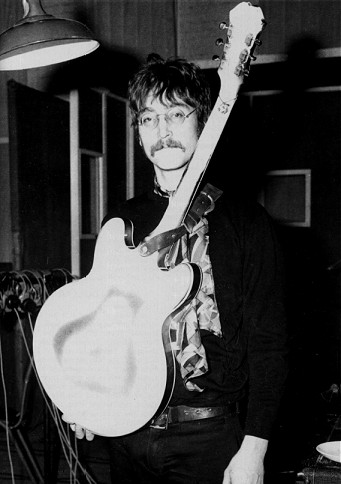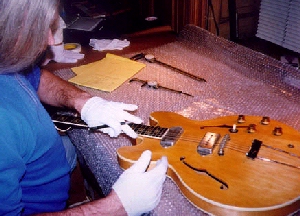Art Thompson
Guitar Player Magazine
February 2000If you're lusting for a Gibson ES-335, but can't swing the lofty price, the Korean-made Dot is an attractive alternative. Like the original, the Dot features a laminated maple body, a glued-in mahogany neck, and a dot-inlaid fretboard. Its '57 Classic pick-ups have Alnico magnets (just like the vintage units), and the cherry finish is period correct. The stop tailpiece and bonnet knobs are authentic touches, as are the "Gibson" engraved trussrod cover and the orange sticker visible through the upper f-hole. Only the headstock shape, the "E" logo on the pickguard, and the bridge (which is wider than a Gibson Tune-o-matic) foil the ruse.
The Dot is well made. Its medium-sized frets are lightly polished and well shaped, the neck joint is clean, the hardware robust, and the finish is flawless. Weight is a moderate 7.5 lbs.
Sounds and playability. The Dot's neck is a little girthier than the ultra-slim sticks fitted to some 335's. It fills your hand nicely, and the low action makes it a delight to play. Played through a variety of amps, the Dot does a decent job of evoking the plump
shimmer of a real 335. Higher gain settings yield some of the meaty rhythm colors and round, sweet lead tones associated with Larry Carlton and Robben Ford, but the pickups definitely lack the detail, dimension, and vibe of early Gibson Humbuckers. The Dot get you in the 335 ballpark-just don't expect the box seats.
The Dot features oversized volume pots that preserve the highs as you roll down the volume. The tone controls offer smooth, predictable treble rolloff, though the tones (especially that of the neck pickup) become excessively muddy at very low settings.
Pros. Well made. Looks and feels a lot like a vastly more expensive Gibson ES-335. Cons. Pickups lack vibe.
Art Thompson
Guitar Player Magazine
February 2000Sir Paul McCartney Solo Performance Video Playing Epiphone Guitar (Win, wma format, 7.67 Meg).
Sir Paul McCartney Solo Performance Video Playing Epiphone Guitar (Mac, mov format, 10.6 Meg).
P.S. Click on guitars or case for purchase links.
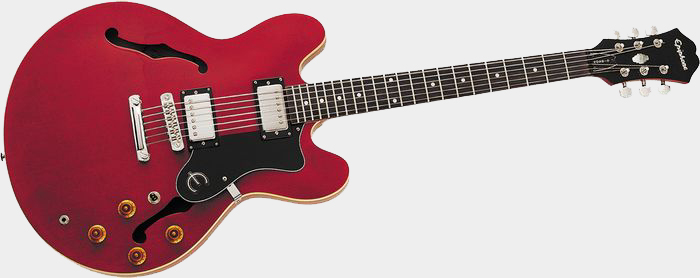
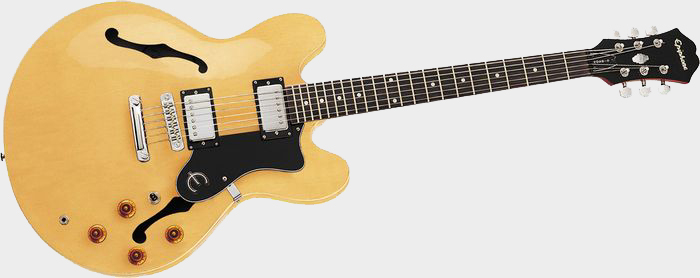
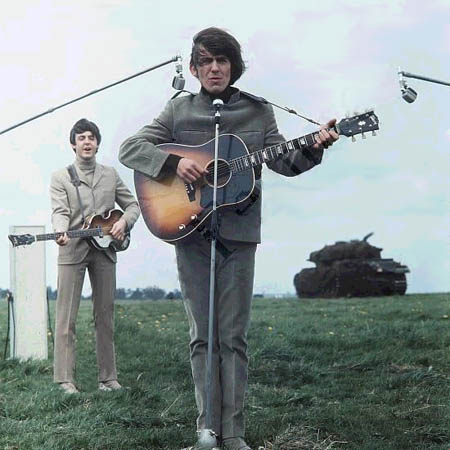
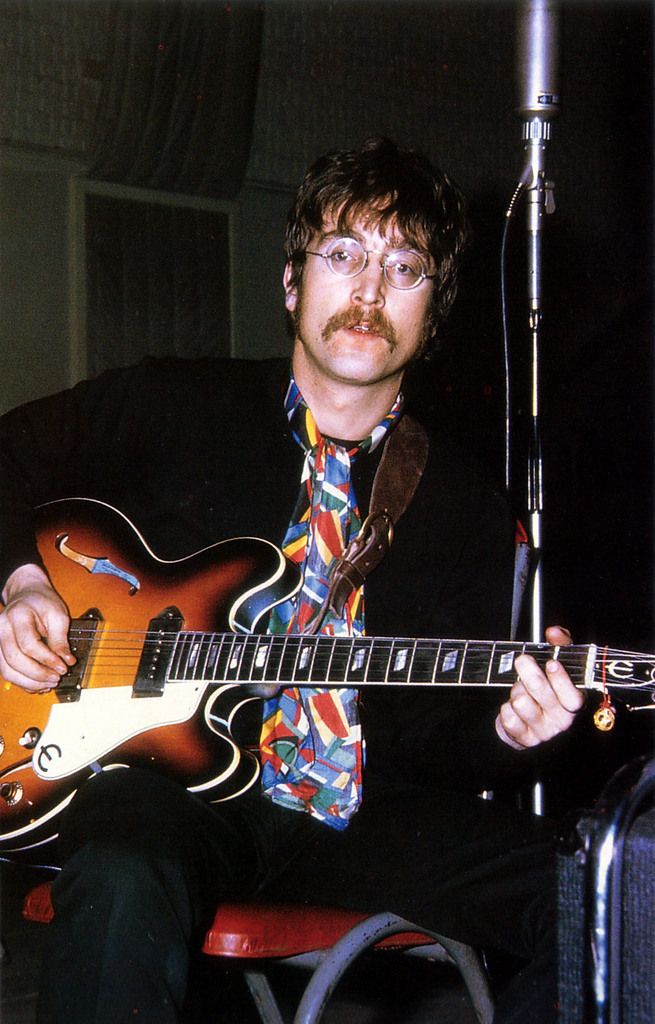
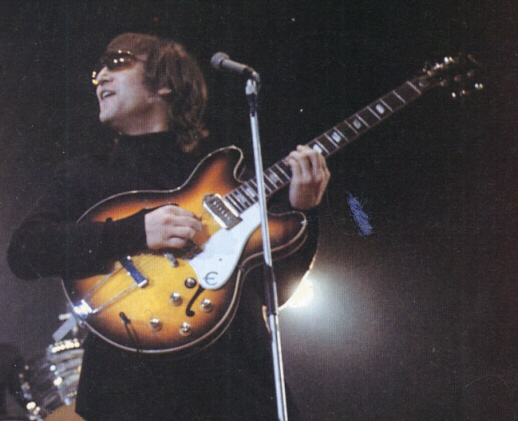
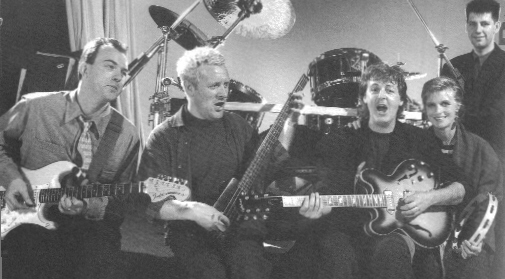
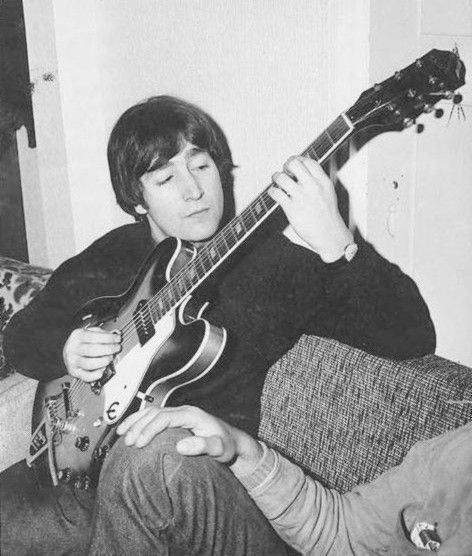
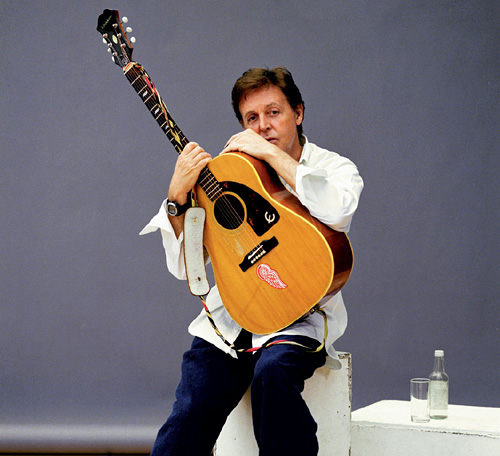
.jpg)

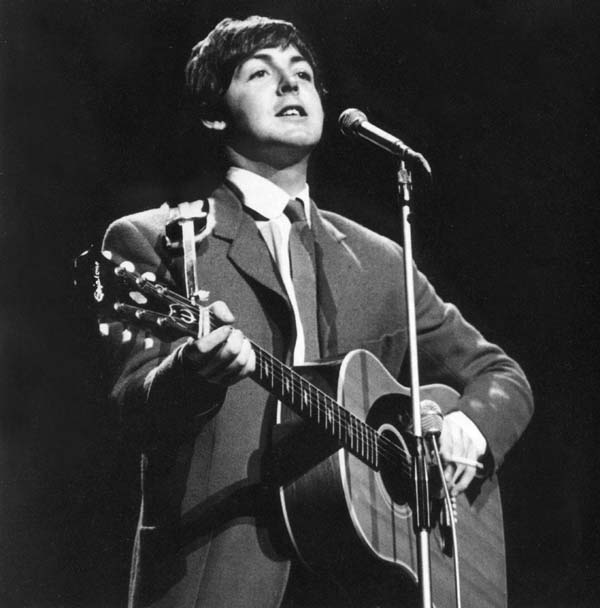
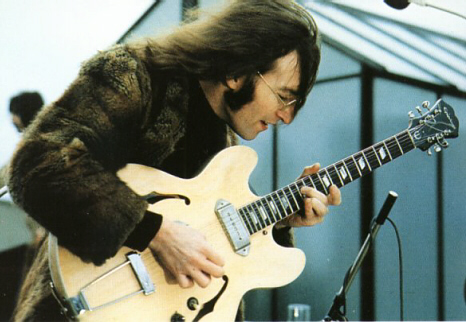 ed with the thin, hollow body produces a very unique sound." In '67, when the
other Beatles were painting their guitars, Lennon sprayed the back of this
guitar (body and neck) with white and gray paint (below), leaving the sunburst
finish on front but removing the pickguard. In the spring or summer of
'68 Lennon had his Casino professionally sanded to a natural finish, as did
Harrison, the better to improve the tone. After that it appeared on the
"Revolution" video, at the Apple rooftop performance (left), the Live Peace in
Toronto concert, and the Rock 'n' Roll Circus show, the
only further change being the replacement of the stock Kluson tuning pegs with
gold Grover tuners. This guitar is owned by the Lennon Estate and has
been displayed at the Lennon Museum in Japan.
ed with the thin, hollow body produces a very unique sound." In '67, when the
other Beatles were painting their guitars, Lennon sprayed the back of this
guitar (body and neck) with white and gray paint (below), leaving the sunburst
finish on front but removing the pickguard. In the spring or summer of
'68 Lennon had his Casino professionally sanded to a natural finish, as did
Harrison, the better to improve the tone. After that it appeared on the
"Revolution" video, at the Apple rooftop performance (left), the Live Peace in
Toronto concert, and the Rock 'n' Roll Circus show, the
only further change being the replacement of the stock Kluson tuning pegs with
gold Grover tuners. This guitar is owned by the Lennon Estate and has
been displayed at the Lennon Museum in Japan.

